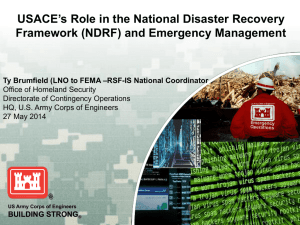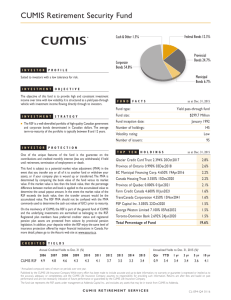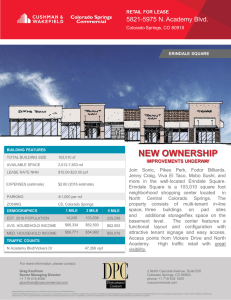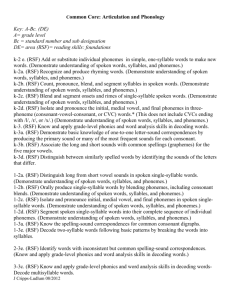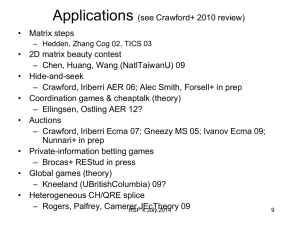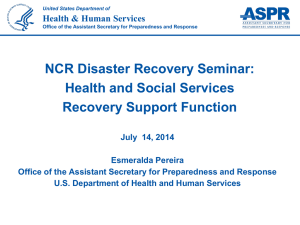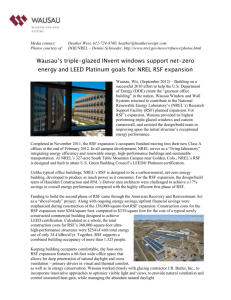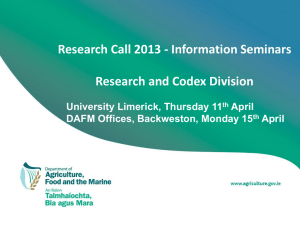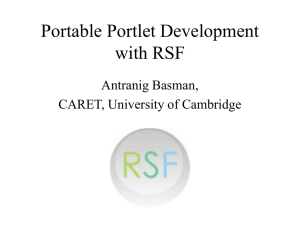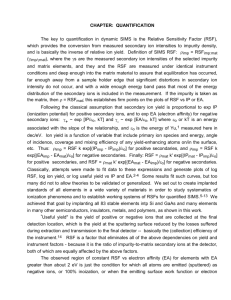Panel 1 - Economy RSF
advertisement
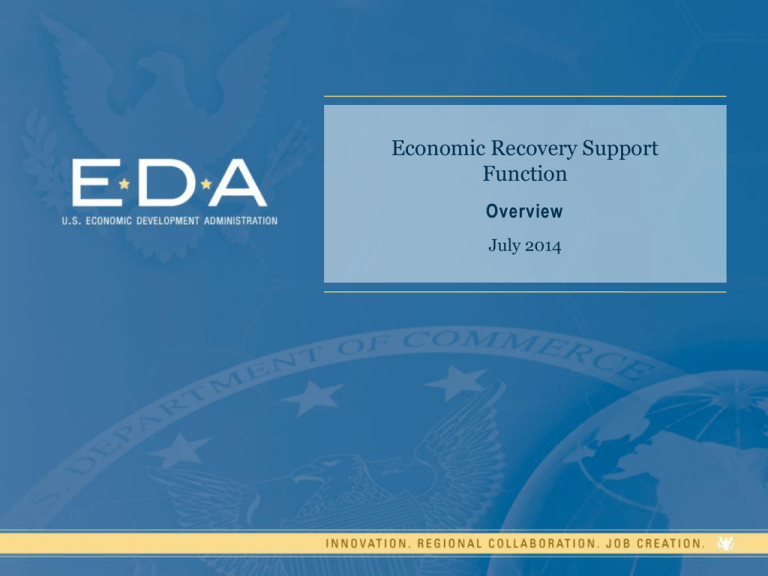
Economic Recovery Support Function Overview July 2014 WHAT IS THE ECONOMIC RSF? The mission of the Economic RSF is to integrate the expertise of the Federal government to help local, state, and tribal governments and the private sector sustain and/or rebuild businesses and employment, and develop economic opportunities that result in sustainable and economically resilient communities, after significant natural and manmade disasters. Key role for Economic RSF is to facilitate economic recovery, not drive it. 2 2 ECONOMIC RECOVERY CONCEPTS Fundamental economic recovery concepts: Investment of time, energy, and resources pre-disaster is key. Integrating resiliency planning into economic, workforce, and community development could yield benefits pre- and post-disaster. Primacy of private sector, as well as state/local government, in defining and implementing economic recovery. Post-disaster economic recovery initiatives should consider and address the unique needs of the community. Some could include, but are not limited to: Community Planning Cash Flow Business Resumption Finance and Insurance Workforce Development Economic Development Small Business Marketing and Communications Assessment and Evaluation 3 WHO IS INCLUDED IN THE RSF? • Federal Partners: – Coordinating Agency • Department of Commerce/Economic Development Administration (DOC/EDA) – Primary Agencies: • Department of Homeland Security/Federal Emergency Management Agency (DHS/FEMA) • Department of Labor (DOL) • Small Business Administration (SBA) • Department of the Treasury (TREAS) • U.S. Department of Agriculture (USDA) – Supporting Organizations: • Corporation for National and Community Service (CNCS) • Department of Interior (DOI) • Environmental Protection Agency (EPA) • Department of Health and Human Services (HHS) • Department of Housing and Urban Development (HUD) 4 4 WHO IS INCLUDED IN THE RSF? (CONT.) • • Federal Partners: – Additional Agencies with ad hoc engagement: • Federal Deposit Insurance Corporation • Appalachian Regional Commission • Delta Regional Authority Common State/Regional/Private Sector Partners: – Economic development organizations - State taxation and revenue agencies – Workforce development organizations - Elected officials – Chambers of commerce - Planning organizations – Development authorities - Community development – Utilities organizations – Institutions of higher education - Critical infrastructure owners/operators – Regional planning commissions - Other? – Councils of government – Economic Development Districts – Financial institutions – State insurance agencies 5 5 WHERE HAS THE RSF BEEN UTILIZED? Tennessee – 2010 - Flooding Gulf Coast– 2010 – BP Oil Spill Alabama -2011 – Tornadoes New York – 2011 – Hurricane/TS Vermont – 2011 – Hurricane/TS Joplin, MO – 2011 – EF5 Tornado Louisiana – 2012 – Hurricane Isaac Ocean City, NJ Nationwide- 2012 – Drought NY/NJ – 2012 – Hurricane/TS Oklahoma – 2013 - EF5 Tornadoes Colorado – 2013 – Flooding Alaska – 2014 – Flooding Arkansas – 2014 – Tornadoes Vermont 6 6 WHAT DOES THE RSF DO FOR COMMUNITIES AND STATES? • • The RSF can execute its mission in focusing on three basic steps: – Conduct a Mission Scoping Assessment – In partnership with the state, capture the overarching issues as it relates to economic recovery – Develop a Recovery Support Strategy – In partnership with the state, document the federal capabilities available to be leveraged to support economic recovery. – Implement the Recovery Support Strategy – Undertake those initiatives identified in the Recovery Support Strategy and work with the state to facilitate the transition to steady-state operations. RSF activities fall into three major categories: – Technical assistance – (e.g. Peer-to-Peer Tourism Workshop, procurement events) – Information sharing – (e.g. connecting the dots between disparate data sources, impact assessments) – Leveraging existing resources – (e.g. working with federal program staff to retool planned initiatives to also support immediate recovery needs) 7 7 HOW DOES THE RSF EXECUTE THE MISSION? • When activated, the RSF team serves as a gap-filler, focused on facilitating information sharing (coordination), problem solving, and providing technical assistance. RSF Agencies Perform Core Mission RSF Team Pushes Information and Data Sharing RSF Team Connects Needs with Resources RSF Team Provides Direct Technical Assistance 8 EXTENDING THE NDRF/RSF MODEL – LESSONS OBSERVED • • If the NDRF (from a Federal perspective) is focused on supporting state/community driven recovery, how can the State/community integrate? Possible Actions: – Align a similar structure for post-disaster recovery • Establish state-level NDRF plans with RSF annexes • Build new public/private partnerships – Adapt existing structures to interface with the Federal structure • Map existing planning and coordination efforts with the “best fit” in the NDRF • Build on existing public/private partnerships • Design Factors: – Establish a process and designate authorities to collect, aggregate, and communicate impact information – Anticipate timing challenges – Exercise leadership pre-disaster – Establish clear expectations – Expect resource limitations SUSTAINABILITY AND INTEGRATION • Establishing an RSF-type structure for recovery has strengths – Recognizes that implementing recovery is not a command and control operation – it’s a matrix leadership model – Capitalizes on the assets, knowledge, and resources of a far broader set of organizations (not typically engaged in recovery) – Establishes efficiencies of scale that might be lost if multiple organizations pursued their own recovery strategies • Establishing an RSF-type structure for recovery has vulnerabilities – With so many partners, maintaining a cohesive leadership core can be a challenge (and political) – Partners with relatively small roles may have difficulty seeing the return on their involvement – Recovery is long term (really long term), maintaining energy and focus for the long haul can be daunting for many ECONOMIC RSF CONTACT INFORMATION Economic RSF National Coordinator Joshua Barnes EDA Disaster Recovery Coordinator jbarnes@eda.gov 202-482-2453 11
